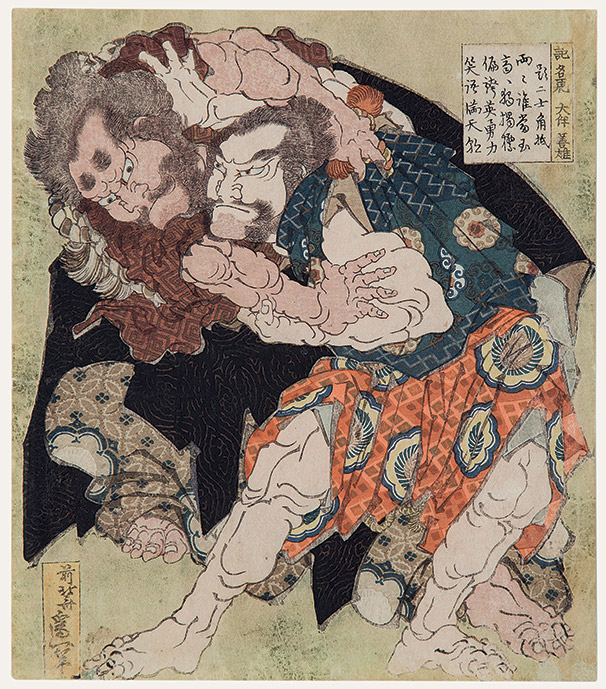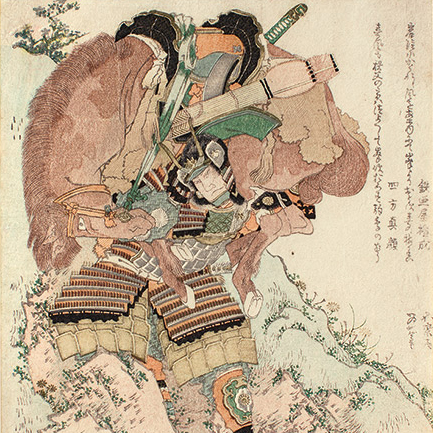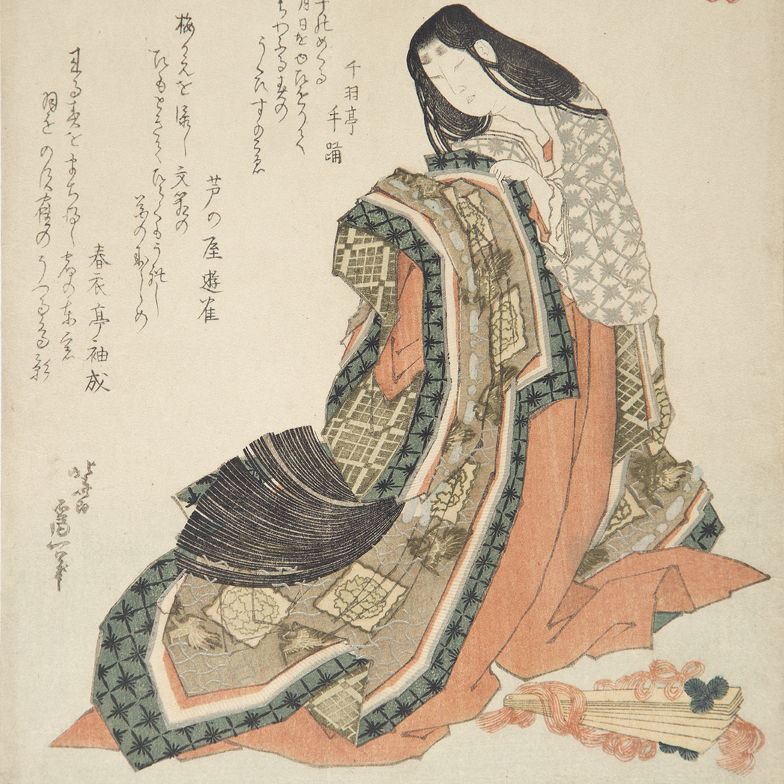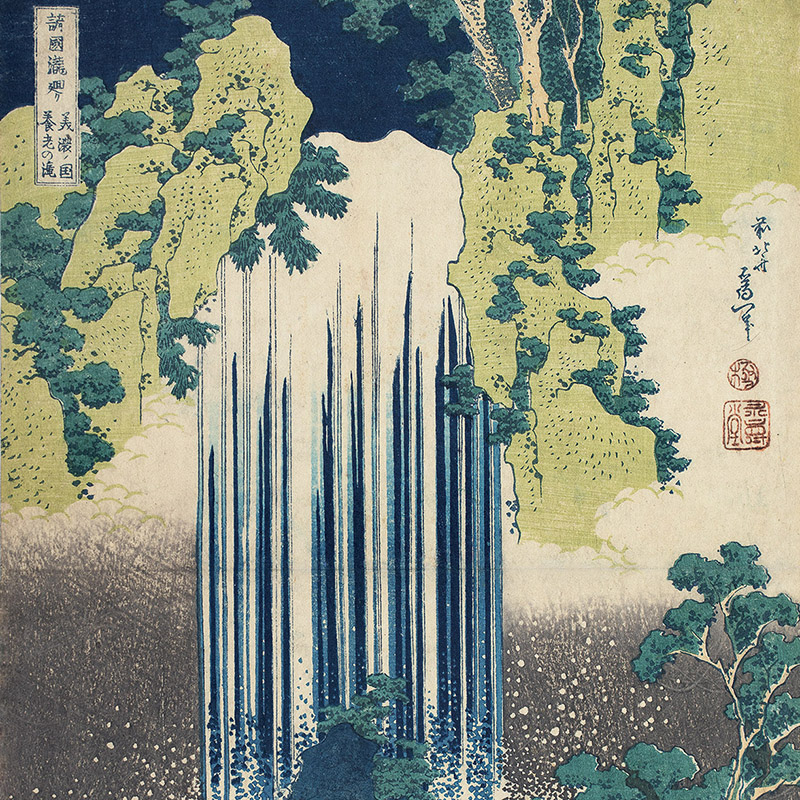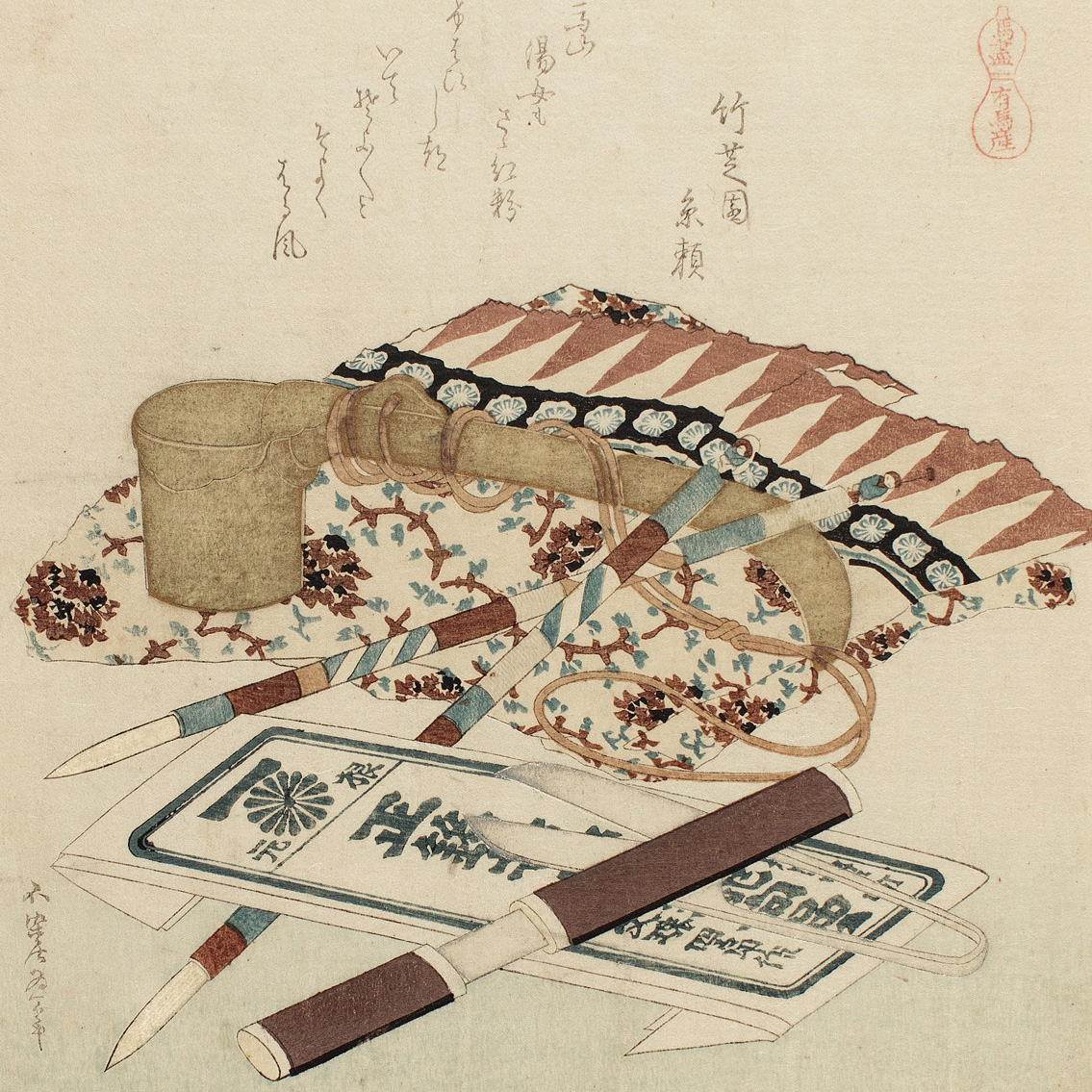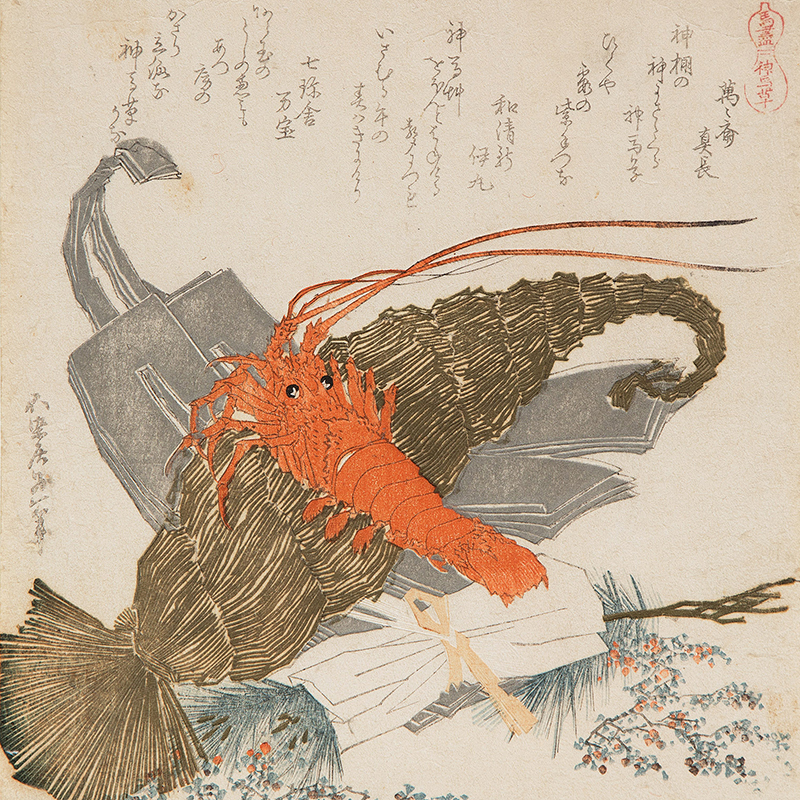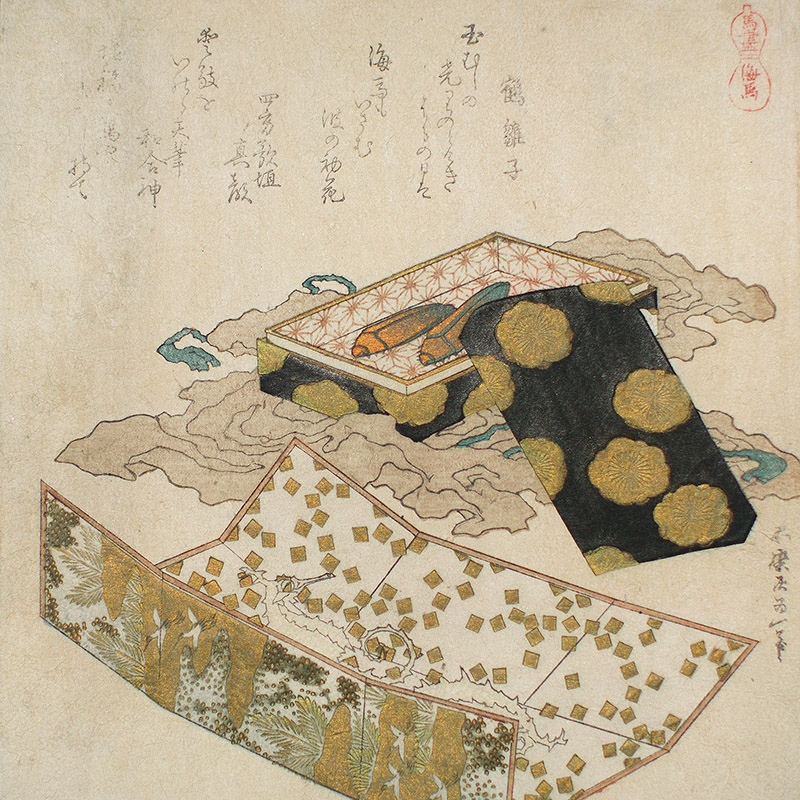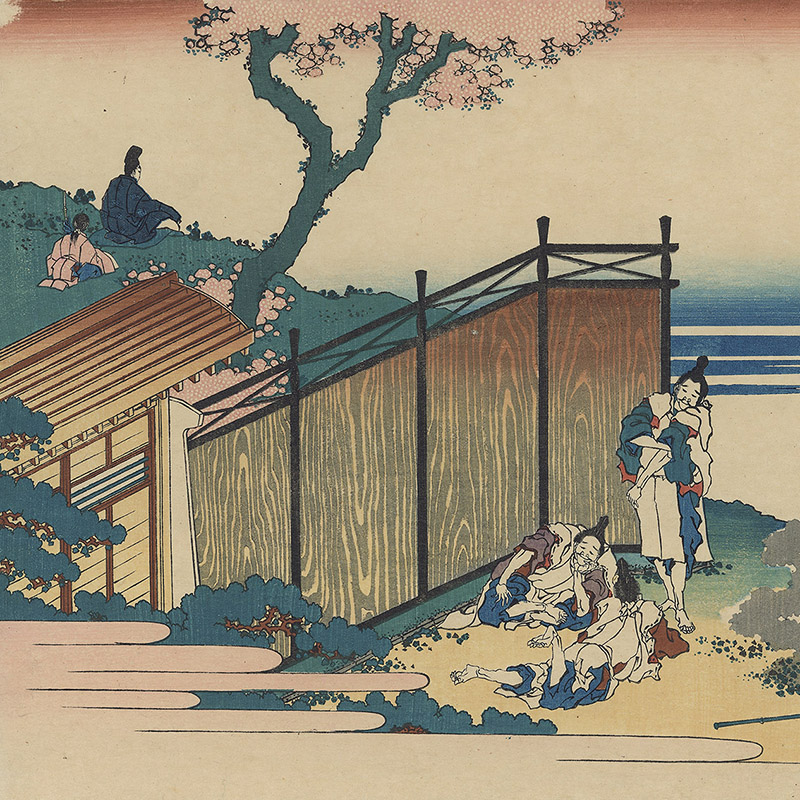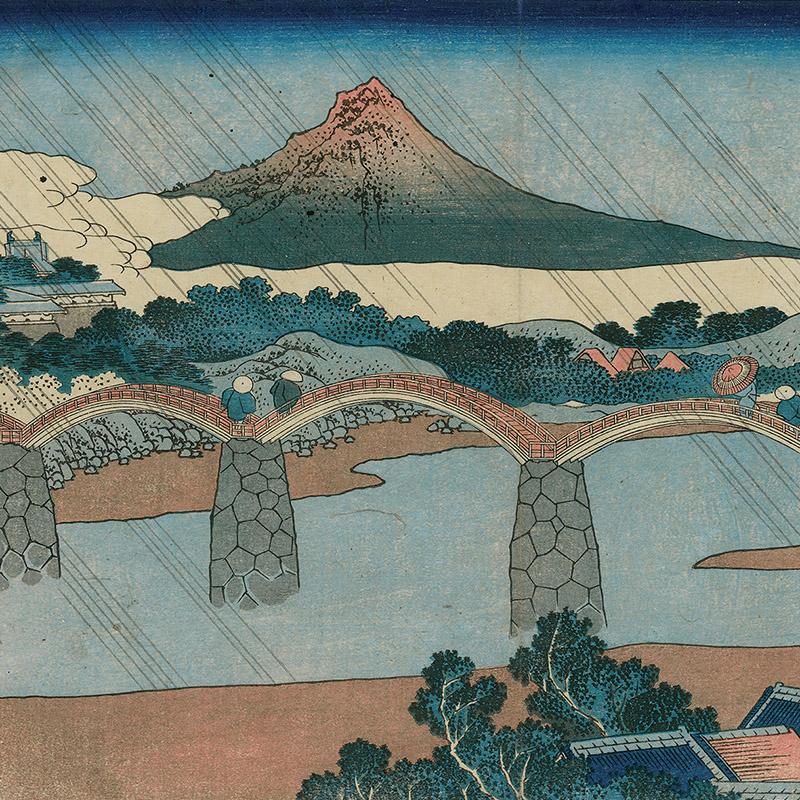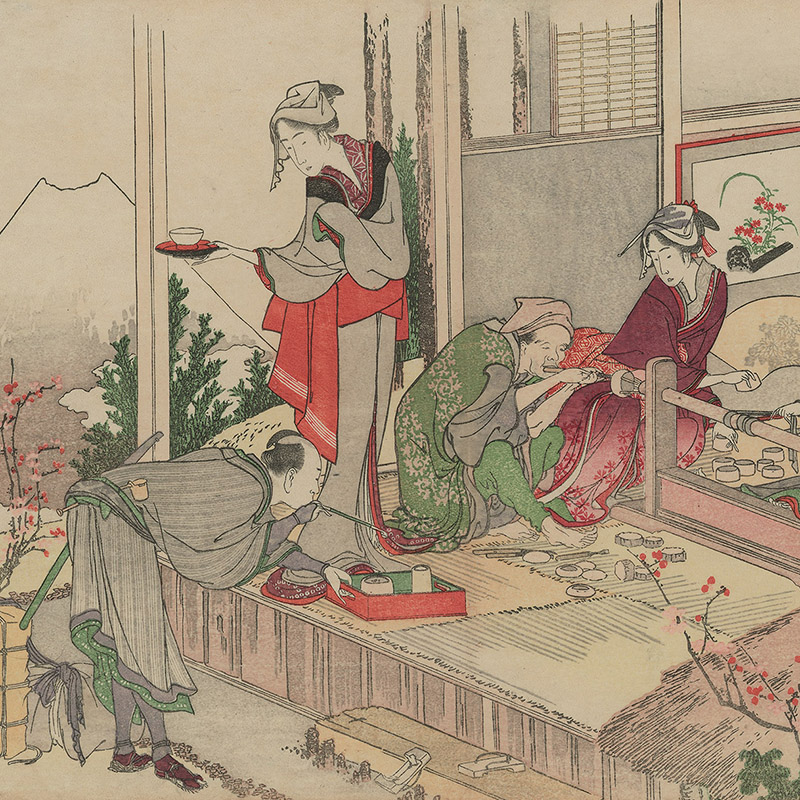Katsushika Hokusai
1760 - 1849
c. 1829
Shikishiban surimono, 210 x 182 mm
Signed: Saki no Hokusai Iitsu hitsu
Fine impression, printed with precious metallic pigments in gold and silver, very good colour and condition.
This surimono is somewhat atypical in the production of early 19th century Ukiyo-e, both in the choice of the theme and in the technique. Though the subject is especially unusual for a surimono, it fits perfectly with Hokusai's desire to seek new means of expression. Here we see the influence of his master Katsukawa Shunshō’s theatrical prints, characterized by impressively bold figure types.
The two grappling wrestlers, whose names are written in the cartouche at the upper right, are depicted with a sculptural quality that is truly monumental. Hokusai has also employed sophisticated technical methods, such as the application of powdered gold and silver and a distinctive color palette.
Further impressions of this print are in the Museum of Fine Arts, Boston (accession number 00.1949), and another, from the Pulverer Collection, Cologne (inv. n. 1020), was shown in Milan in 1999 in the exhibition devoted to Hokusai. See Gian Carlo Calza, Hokusai, il vecchio pazzo per la pittura, Milan 1999; cat. No. V.28.
A preparatory drawing for this print was in the Vever collection. See Jack Hillier, Japanese Prints and Drawings from the Vever Collection, London 1976; vol. III, no. 760.
Price on application
Information on the master
Katsushika Hokusai, dominated the scene of the art of the Japanese print (Ukiyo-e) in the field of book illustration, drawing and painting. He was born in the Honjo district of Edo. His passion for art began at an early age; he was adopted by an illustrious family of artisans who introduced him to wood engraving. This influenced his career and at the age of 18 he entered at the studio of Katsukawa Shunso (1726-1793), who specialised in prints depicting the popular Kabuki theatre. Under the pseudonym of Shunro, around the 1780s, he got to know artists like Shigemasa (1739-1820) and Kiyonaga (1752-1815) who influenced his drawing of figures. Around 1790 he produced his first important prints which he signed Kako. He also produced fine Surimono. In 1797 he married and took the name Hokusai, becoming one of the foremost illustrators and artists of Japan. Among his most famous work are the ehon, books of images, as the 15 albums of drawings entitled Manga. The most celebrated of his prints series is The thirty-six views of Mount Fuji, early thirties. Amongst his many pupils: Shinsai, Hokuju, Hokuba, Hokkei, Shigenobu.
Other works of the master
